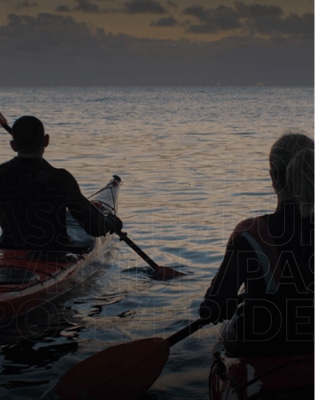European Commission releases offshore renewable energy strategy
The European Commission released an "EU Strategy to harness the potential of offshore renewable energy for a climate neutral future" (the Strategy) on 19 November 2020.
The Strategy is part of the wider EU movement to towards a greener economy, as outlined in the "EU Green Deal" and recently published EU Commission proposal to cut greenhouse gas emissions by at least 55% by 2030 across Europe, with the overarching objective of putting Europe on a responsible path to becoming climate neutral by 2050.
The Strategy envisages that the EU's offshore renewable energy (ORE) capacity will ramp up to 300 GW of offshore wind generation, and 40 GW of ocean energy, by 2050. This objective is a substantial increase over the EU's currently installed offshore wind capacity of 12 GW, but the Commission maintains that it is a realistic and achievable goal.
To achieve this outcome, the Strategy sets out a number of key areas for policy and regulatory change:
- Maritime spatial planning: The Strategy envisages that EU member states will need to identify and use a much larger number of sites for ORE production than previously envisaged (while ensuring coexistence with other users of the maritime area). The EU's Maritime Spatial Planning Directive currently requires member states to prepare national marine spatial plans, which must be submitted to the European Commission by 31 March 2021. The Strategy envisages that this national approach could evolve over time into coordinated sea basin strategies and plans, as well as regional sea conventions.
- Onshore and offshore grid development: The Strategy envisages a transition from "radial"/project-to-shore grid development to a more coordinated "meshed grid" approach. This approach would see the delivery of various forms of "hybrid" projects, which would be connected to energy hubs or directly to cross border interconnectors. Such rationalisation of grid connection assets could reduce both costs and use of maritime space. The Strategy notes that delivering these outcomes requires further integration and cooperation between Member States, transmission service operators and regulators.
- Clearer EU regulatory framework for ORE: As ORE projects and associated grid connections become more integrated, clearer electricity market rules are required to provide certainty and mobilise investment. The Strategy envisages that "offshore bidding zones" could be set up, taking advantage of cross-border interconnections. The Strategy acknowledges that some form of revenue stabilisation system may be required to ensure investor certainty, and that dedicated support for emerging ORE technologies (tidal, wave and floating offshore wind) may also be appropriate.
- Mobilising private sector investment: The Strategy estimates the investment needed for large scale deployment of ORE at €800 billion. Although the bulk of this investment is envisaged to be private capital, the Strategy notes that programmes such as the new Invest EU programme could provide support and guarantees for emerging technologies to accelerate private investment. The EU has also implemented a Recovery and Resilience Facility of nearly €700 billion, which could support reforms and investments in ORE. As funding under the Recovery and Resilience Facility must be committed by the end of 2023, Member States will need to have a dedicated pipeline of mature projects to avail of that investment.
- Focusing research and innovation: The Strategy envisages that the first work programme for the Horizon Europe programme (2021 and 2022) could include support for emerging ORE technologies such as floating offshore wind, ocean wave and tidal energy, along with associated development of innovative grid technologies.
- Stronger supply chain across Europe: The Commission proposes to set up a dedicated working group for ORE, to facilitate cooperation and pool expertise between offshore energy technologies and across different ORE supply chains. Other areas of focus include providing education and training to ensure a skilled workforce is available; developing a more "circular" approach to decommissioning; reusing and recycling wind turbine components; capitalising on the EU's export capacity; and using international partnerships to develop ORE, particularly in developing countries and emerging markets.
Developments currently underway in Ireland align with the Strategy
The actions being taken in Ireland to deliver a more fit for purpose legislative and regulatory regime for ORE align with the core themes identified in the Strategy. The following steps are in progress:
- Development of the Marine Planning and Development Management Bill (the MPDM), which sets out a new legislative regime for forward planning, development management and enforcement in the maritime area. The Bill is entering into the "pre-legislative scrutiny" phase from 24 November 2020, with a final Bill due to be published for consideration by the legislature in early 2021, and the Phase 1 ORE projects expected to go into the consenting phase mid 2021.
- The government has consulted on a National Marine Planning Framework, which is the Maritime Spatial Plan for Ireland. This Framework is on track to be submitted to the Commission by the 31 March 2021 due date.
- The government consulted on various grid approaches in June 2020. This consultation focused on various options, ranging from a centralised/"plan led" approach through to a decentralised/"developer led" approach (along with hybrid options). As currently framed, the MPDM includes provisions for both a centralised and a decentralised approach to offshore development, including grid provision. The UK regulator, Ofgem, is also seeking industry feedback on similar questions.
The above actions all support the ambition in the Climate Action Plan 2019 to achieve 3.5 GW of ORE capacity by 2030 (which the Programme for Government 2020 revised upwards to 5 GW).
While the steps being taken to facilitate ORE development in Ireland are broadly aligned with those at an EU level, it is key that the Irish government takes these ongoing EU developments into account to ensure that Ireland's new ORE consenting regime, once in place, is both fit for purpose and is consistent with EU measures.
For more information please contact Alan Roberts, Jason Milne, Alison Fanagan, John Dallas, Ross Moore, Kristen Read or any other member of the ALG Environmental and Planning or Energy teams.
Date published: 27 November 2020








